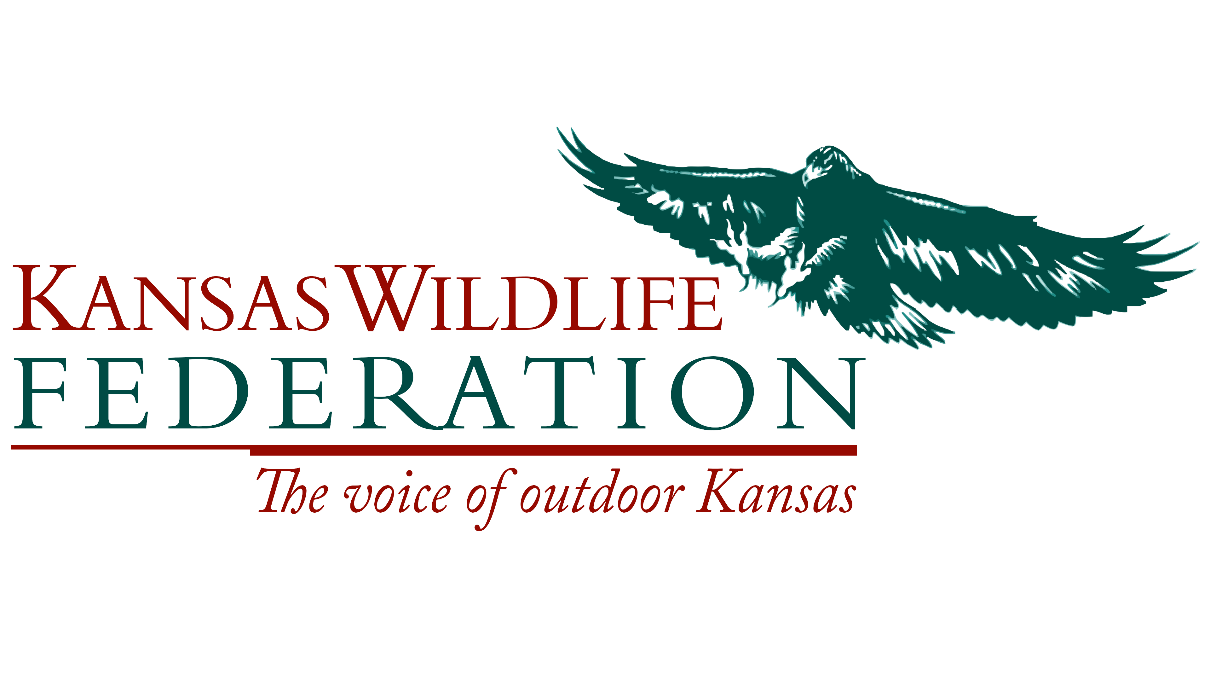KWF Newsletter: Spring 2021
In This Issue:
KWF UPDATES – AMERICAN BUFFALO – KANSAS CRAPPIE FISHING – LAWN TO NATIVE
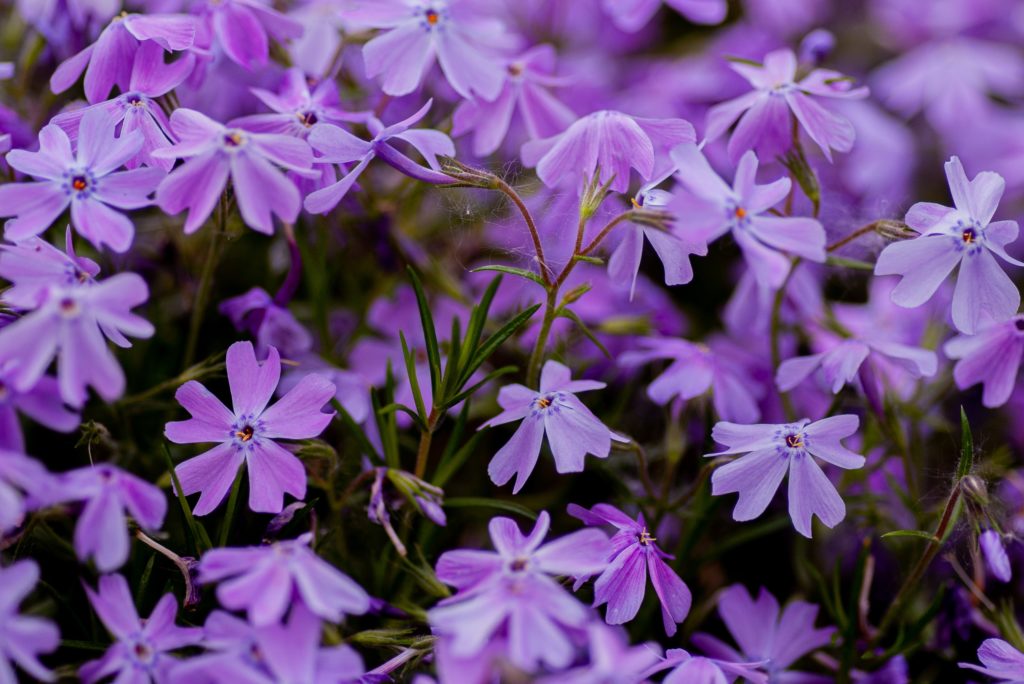
President's Message
Summer tanagers, painted buntings, cardinals, red foxes, ring-necked snakes, goatweed leaf wings! My half-acre yard, which is filled with native plants, bird feeders, and a butterfly puddler, provides a healthy alternative to the ubiquitous screen and carried me and my family through the past 14 months of pandemic isolation. We delighted in waking up each morning to bird sounds, wings fluttering up from the leaf litter, and the occasional shy snake warming on a flagstone. Restoring native food webs in your yard brings a new dimension of joy to hanging out at home.
Check out the articles in this quarter’s newsletter to help you bring your yard up to snuff and then consider joining thousands of other Kansans in certifying with the National Wildlife Federation (hint: you can use this 20% off coupon on any certification sign).
Also, Brent Frazee is back with his tips on spring crappie fishing (highly recommend this fish for making fish tacos) and have you ever thought about a buffalo grass lawn? Jeff Seim delights in his first book review (American Buffalo by Steven Rinella) and we feature a host of other useful information to enrich your Kansas springtime.
Mensaje de la Presidente
¡Summer tanagers, painted buntings, cardinals, red foxes, ring-necked snakes, goatweed leaf wings! Mi jardín de medio acre, que está lleno de plantas nativas, comederos para pájaros y un plato de mariposas, ofrece una alternativa saludable a la pantalla omnipresente y nos ayudó a mí y a mi familia a través de los últimos 14 meses de aislamiento pandémico. Nos deleitaba despertarnos cada mañana con los sonidos de los pájaros, las alas revoloteando en las hojas y la ocasional serpiente tímida serpiente calentándose sobre una roca. Restaurar las redes alimenticias nativas en su jardín brinda una nueva dimensión de alegría a pasar el rato en casa.
Consulte los artículos en el boletín informativo de este trimestre para ayudarlo a mejorar su jardín y luego considere unirse a miles de otros habitantes de Kansas para certificarse con la National Wildlife Federtion Jardín Silvestre (puede usar este cupón de 20% de descuento en cualquier letrero de certificación).
Además, Brent Frazee tiene ideas sobre la pesca del tipo de pez en primavera (recomiendo este pescado para hacer tacos de pescado) y ¿ has pensado en un césped de pasto de búfalo? Jeff Seim se deleita con su primera reseña de un libro (“American Buffalo” de Steven Rinella) y presentamos una gran cantidad de información útil para enriquecer su primavera de Kansas.

KWF News!
Join us in welcoming our two newest people on the team: Cassie Standley and Rachel Roth! These two are joining us as Advocacy Specialists and are hard at work to make sure the Kansas outdoors are a safe and welcoming place for everyone to enjoy. We will have more news on our advocacy work soon, but just know that we are hard at work behind the scenes!
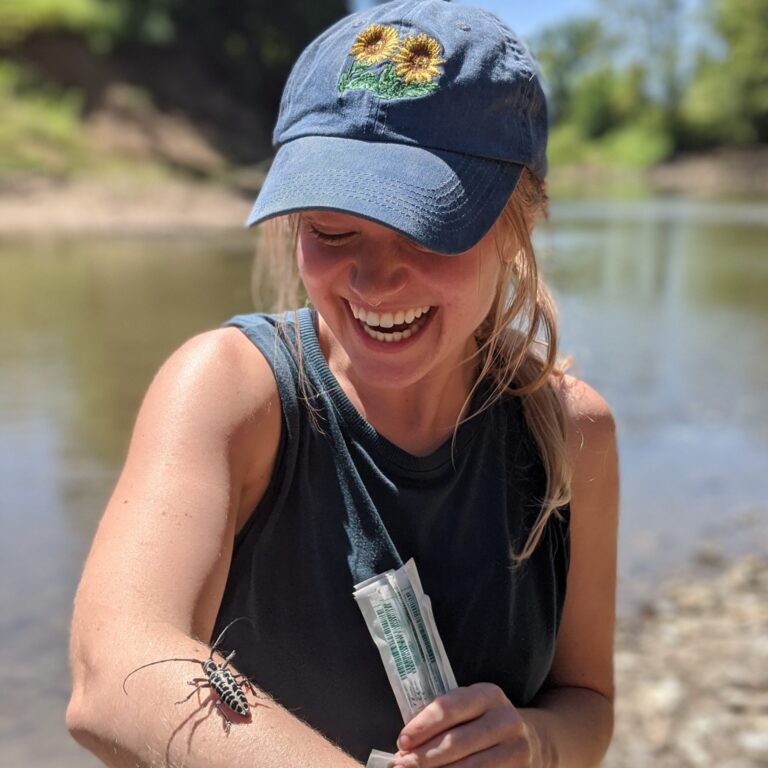
Cassie earned her degree in Strategic Communication from Wichita State University, where she first lobbied the Kansas legislature on behalf of student government. Over the last seven years, she has worked in marketing, volunteer organizing, and conservation. As an avid hiker, camper, and spider enthusiast, Cassie is passionate about making the outdoors safe and fun for everyone.
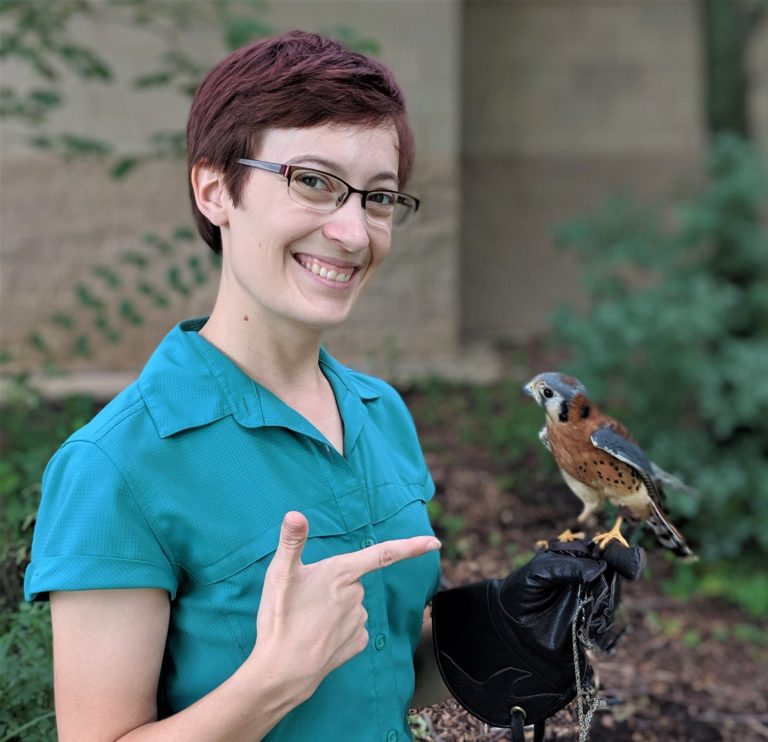
Rachel is a Kansas local who specializes in wildlife and science communication, with a B.S. in Wildlife and Fisheries Conservation Management from K-State. She co-founded the nonprofit Grassland Groupies to give a voice to grasslands conservation, and has a soft spot for modern avian dinosaurs.
American Buffalo: In Search of a Lost Icon
by Steven Rinella
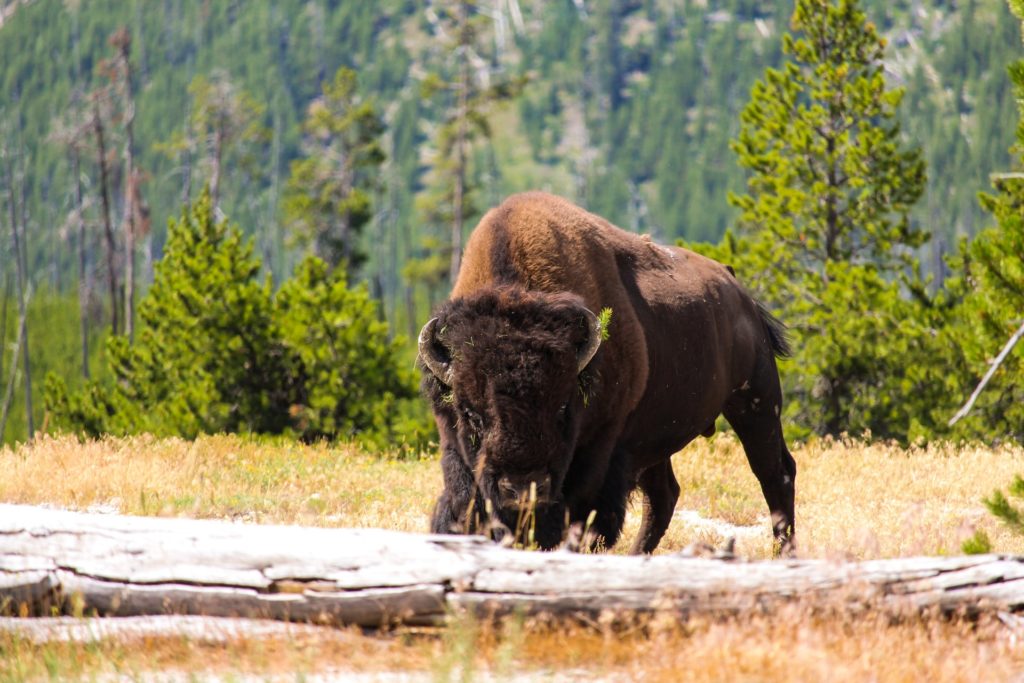
Spring is on its way, and with it the changing of another season. If you are looking for a book to entertain you on some of the rainy days of spring in Kansas, look no further than Steven Rinella’s “American Buffalo”. This book is a well-blended mixture of Rinella’s personal experiences pursuing bison in Alaska, natural history of this icon of the west, as well as an interesting view into just how close this magnificent creature came to joining the ranks of other extinct megafauna of North America. Rinella discusses bison from antiquity, the history of bison in North America, as well as our human history with them, and how it nearly led to the destruction of the species. But through conservation efforts of both hunters, and perhaps more importantly, the cattle industry, there are still bison for us to appreciate. And just enough free-range herds to enable us to imagine a Kansas prairie engulfed by this grazer or the plains.
Kansas Quiz Question: What town in Kansas is the closest to the literal geographic center of the United States, according to the U.S. Geological Survey? Answer at the end of the newsletter!
It's a Spring Thing: Crappie Fishing in Kansas
by Brent Frazee
On a warm, windy day in late March, Joe Bragg and David Harrison got in a little spring training at Clinton Lake. The main event that many Kansans look forward to –the crappie spawn—wouldn’t take place for several weeks. But the popular panfish provided a sneak peak of what was to come.
Looking at the LiveScope at the bow of his boat, Bragg pointed out a big swimming mark on his screen and instructed Harrison to drop his plastic grub to the fish. When Harrison put it right in front of the crappie, his rod bowed sharply and he knew he had a big fish.
“That’s a tank,” said Bragg, who runs the Thump Thirty Guide Service. Seconds later, a scale confirmed that the fat fish weighed 1.91 pounds—Harrison’s personal best and proof that eastern Kansas holds some trophy crappies.
Each year, Bragg follows the speckled panfish from their winter haunts to the spring spawning sites in the shallows, where they are the most accessible to the common angler as they will get. In late April and May, the crappies will move en masse to the brushy shallows and they will be met by thousands of fishermen across Kansas fishing either from the bank or in boats. It doesn’t take an expensive boat, high-dollar electronics or the latest tackle to find the fish and catch them. Spring is everyman’s season for crappie fishermen.
But to maximize your success, it pays to understand how the spawn operates, Bragg said. The pre-spawn period often starts when the water temperature warms into the low 40s. The shad move from their deep winter haunts onto the shallow flats, and the crappies will follow them there to feed up for the spawn. Because the females are heavy with eggs and the baitfish they are feeding on, some of the biggest crappies of the year can be caught during that phase. They can be surprisingly shallow—sometimes in less than 5 feet of water.
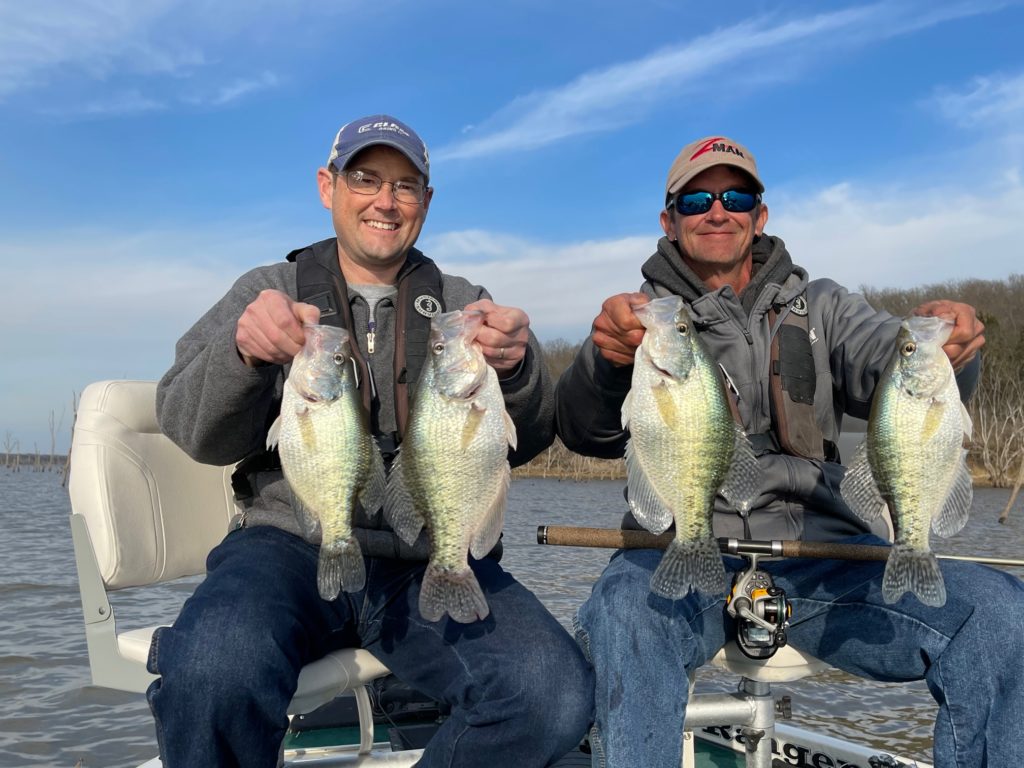
As the water temperature warms into the mid-50s, spawning activity begins. The males will move to the banks first to build the nests. They can be recognized by their dark spawning colors. The females will join them in the shallows to spawn but won’t stay there long. In fact, the females often hang in brush just out from the places where the males are building the bests, waiting for the right time to move in.
“The first full moon after 13 hours of daylight is when they’ll spawn,” Bragg said.
A week to 10 days before that, the males will be in, building the nests. That time period often translates to the last part of April to mid-May in Kansas. Bragg often searches for coves with brush or willow thickets in the back of pockets. Rock or gravel banks can be productive. And transition banks—say, where a mud bank transitions into rock or gravel—also can attract spawning crappies.
Bragg keys on north banks, which warm up first. Timing is everything. The best fishing can last only 10 days in one part of the reservoir. Luckily, the crappies in a reservoir don’t all spawn at the same time. The upper end of a reservoir turns on first, It may be more than week later that the crappie spawn heats up at the dam end. That stretches out the best shallow fishing and often gives fishermen up to a month of good action.
In eastern Kansas, Clinton, Perry, Council Grove, Pomona, Melvern, and Hillsdale all have outstanding crappie populations and can produce great spring fishing. “Kansas fishermen have lots of options,” Bragg said. “A lot of our reservoirs have strong crappie populations. “High water and the weather can throw things off. But as long as conditions are right, we’ll see a lot of crappies caught this spring.”
Lawn to Native—Part 1:
What to know before converting your high maintenance lawn to pollinator habitat.
In 2019, the National Recreation and Park Association (NRPA) conducted a national poll to learn more about perceptions and educational needs regarding pollinator conservation. According to the poll, 95% of those surveyed agreed that special efforts to create designated areas where plants support the health and growth of pollinators, like honeybees and butterflies, should be made. But only 34% of those surveyed were confident they know what actions can be taken to help the conservation of pollinators. It is clear Americans understand the importance of supporting pollinators, but some could use more guidance on how to accomplish that.
Over the next two newsletters, I will cover what to know before converting your lawn to pollinator habitat (part 1) and how to apply that knowledge on your own property through a case study (part 2).

Know your local ordinances
Understanding your local ordinances would be the first step toward a pollinator friendly yard. You can find your municipalities ordinances online or by calling and requesting a copy from your local governmental body. This is assuming you live in a town or city. If you live out in the country, go big! Because more than likely there is no restriction on this type of vegetation on your property.
It is important to understand if you could get away with planting your whole lawn with native vegetation or if you need to be more deliberate with the placement. Often, the best way to follow a town/city landscape ordinance is to plant in planting beds with well defined edges. Some municipalities may also require a fire break between structures and heavily vegetated areas. Knowing your local ordinances in regard to landscaping requirements BEFORE making a major change will prevent any non-compliant issues down the road.
Know your local soil type
There are over 300 different soil types in Kansas, so it is good to know what type of soil you have on your property. That information can be found through the USDA Natural Resources Conservation Service: Web Soil Survey. This assumes your property wasn’t heavily developed with infill material. More precise testing can be done by contacting your local K-State Research Extension office.
Understanding your soil type will give you an idea on what type of vegetation will thrive better on your property. For example, a plant that prefers well-draining soils will do better in sandy/loamy material. A plant that can handle keeping its feet wet may thrive in loamy/clay soils. We will get in to plant selection in the next section.
Know your plant hardiness zone
According to the USDA, Kansas is in hardiness zones 5 and 6. These zones are based on the average annual low temperature. However, there is another consideration that the hardiness zone map does not cover: moisture. Eastern Kansas is more humid than western Kansas. Drought-tolerant plants are highly recommended in the western half of the state.
Finding the right plant for these conditions can be found in various forms online. The Dyck Arboretum of the Plains, the Kansas Native Plant Society, kswildflower.org, and Missouri Botanical Garden are some of my favorite resources for finding what is native and what works for each type of condition.
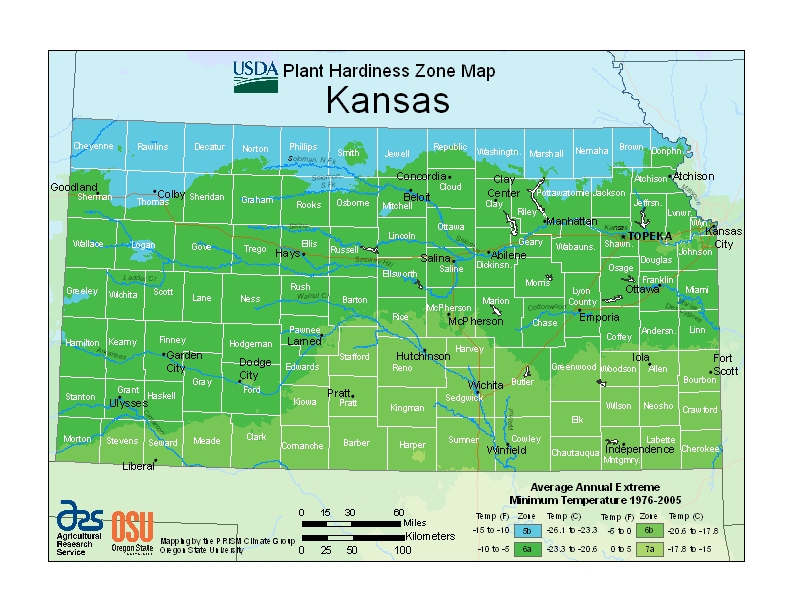
Know your drainage patterns
It has been scientifically proven—Kansas is flatter than a pancake! But the water must go somewhere. It is important to know how storm water flows on and through your property. Does your property tend to hold water in certain areas? Or does it quickly runoff your property, causing erosion issues for your neighbors? In both instances, not only will a thoughtfully placed rain garden mitigate these issues but also create pollinator habitat.
In the next part of this series, I will apply these principals through a case study, which I hope will give a few readers the confidence to convert their high maintenance lawn to pollinator habitat. Stay tuned!
Kansas Quiz Answer: What town in Kansas is the closest to the literal geographic center of the United States? Lebanon, KS
Join the Kansas Wildlife Federation!
It is FREE to become a member of the Kansas Wildlife Federation. When you sign up on our website, know that you are joining a community of conservation-minded outdoorspeople, hunters, anglers, gardeners, and concerned citizens. If you enjoyed this newsletter, consider a donation to support our mission and let us continue to provide great free resources.
Membership Includes:
- Subscription to our monthly digital news bulletin! This is a quick emailed overview of upcoming events, important news items, and book, documentary, lecture, and podcast recommendations from us to help you stay “in-the-know” each month.
- Emailed action alerts for pending Kansas and National legislation relevant to the interests of our members
- Invitation to our annual meetings
- Invitation to scheduled events such as conservation pint nights, learning sessions, lectures, and coffee chats
